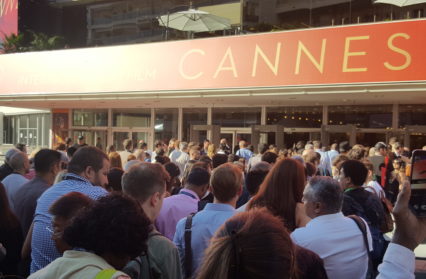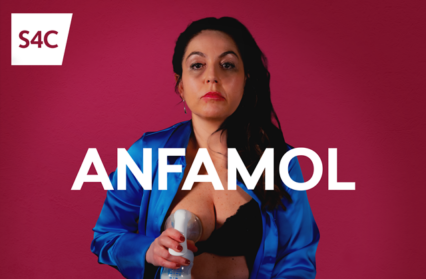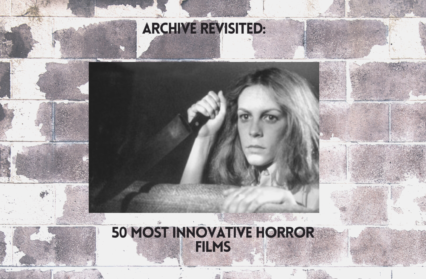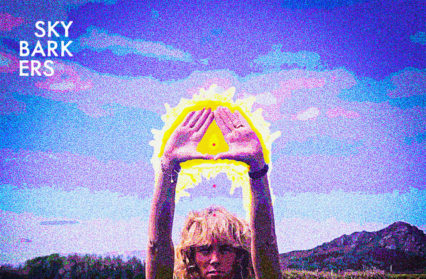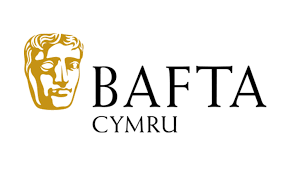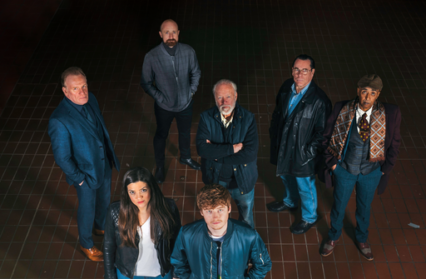Film writer and co-director of the Abertoir Horror Film Festival in Aberystwyth, Nia Edwards-Behi, was at this year’s 70th Cannes Film Festival.
The winners have been announced, the debates rage on and the hired jewellery has been returned: the 70th Festival de Cannes has come to an end. The Cannes Film Festival is one of those transcendent film events, like the Oscars, where suddenly everyone cares – news outlets debate films and the culture around them, fashion magazines trolley out style reports and endless photos, and people pay attention. Cannes does not just belong to a cultural niche, it’s a global event. It’s easy to draw up a mental image of what the festival looks like – the red carpet, the yachts, the parties, the luxury all glistening under that Riviera sunshine. It’s easy to image the audience, too, majority tuxedoed and sometime bejewelled, loudly expressing their love or disdain for the film they’re watching. The Festival de Cannes is iconic.
This year’s festival ran from 17-28th May, and I was in Cannes from the 16th to the 22nd – but I didn’t walk a red carpet, or see a single celebrity, or sit surrounded by tuxedoes. What’s somewhat less iconic to anyone not involved in the film industry is the Cannes Marché du Film, which runs more or less concordantly with the Festival. Certainly not the only film market in the world, but nevertheless one of the most important, the attendees range from CEOs and executives to, well, somewhat small-time festival directors from mid-Wales. While the Festival offers grand surroundings and strict codes for dress and etiquette, the Marché places you nearby, offering what essentially amounts to a tradeshow for films, with a schedule of screenings and events to fit in amongst meetings and, sometimes, time to eat and socialise.
Attending the Marché – either buying films, selling films, or just looking for those up-and-coming titles to screen at a festival – allows you a wonderful opportunity to sample the apparent main event. Your attendance badge allows you to request tickets to all the grandest of Festival screenings and allows access to secondary screenings of some of the films which play in competition. I generally can’t be bothered with the regalia and refinery required for attending gala screenings (not for any ideological reason, you understand, I’m just lazy), and this year I wasn’t quite up to attending any of the more casual yet no less logistically painful early-morning or midnight screenings. In 2014 I attended an 8:30am screening of Mad Max: Fury Road, and it’d take a film of that magnitude to get me up and ready to be seated so early in the morning.
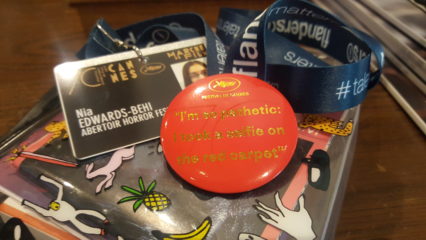 Whenever I visit Cannes I always arrive a day before the Marché begins in order to get my bearings and adjust. I’ve been twice before, but my trips have been spaced out enough that I need to remind myself of where everything is and how to get about. I don’t stay in Cannes itself, but rather one of the nearby towns, as comfortable and beautiful as the main attraction. This year, I stayed in Juan-les-Pins, of jazz and Peter Sarstedt fame, and near enough the train station so that I wouldn’t get too lost. The wait to register at the Marché can take a while, so on that first day I made sure to travel into Cannes itself too, to collect my badge and bag. The badge is all important – it gets you in to the market, the market screenings and some other venues. There are levels to this. The more important you are, the better your badge, and film buyers win the day with their coveted purple-striped badge. You also get given a bag filled with important documents such as the maps, market guides, promotional materials and, nicely, the main Festival programme too. The bag itself changes every year, and thankfully this year’s was surprisingly practical. Though on most days I used my own backpack, the market bag was vital on the busiest sessions of film hunting to allow for extra storage. Even given a narrow field of searching – horror films, in my case, even if my definition of the genre is exceptionally broad – results in reams of printed publicity material.
Whenever I visit Cannes I always arrive a day before the Marché begins in order to get my bearings and adjust. I’ve been twice before, but my trips have been spaced out enough that I need to remind myself of where everything is and how to get about. I don’t stay in Cannes itself, but rather one of the nearby towns, as comfortable and beautiful as the main attraction. This year, I stayed in Juan-les-Pins, of jazz and Peter Sarstedt fame, and near enough the train station so that I wouldn’t get too lost. The wait to register at the Marché can take a while, so on that first day I made sure to travel into Cannes itself too, to collect my badge and bag. The badge is all important – it gets you in to the market, the market screenings and some other venues. There are levels to this. The more important you are, the better your badge, and film buyers win the day with their coveted purple-striped badge. You also get given a bag filled with important documents such as the maps, market guides, promotional materials and, nicely, the main Festival programme too. The bag itself changes every year, and thankfully this year’s was surprisingly practical. Though on most days I used my own backpack, the market bag was vital on the busiest sessions of film hunting to allow for extra storage. Even given a narrow field of searching – horror films, in my case, even if my definition of the genre is exceptionally broad – results in reams of printed publicity material.
The bulk of the Marché takes place in the Palais de Festival building, and as you might imagine, security is paramount – this year more than ever. The wait outside the building on the first morning was around 15 minutes, after which you face a bag search, a walk-through scanner, and a manual body scanner. I spent my first morning of the festival making a first round of the market – no mean feat. Based over three floors, there are literally hundreds of companies vying for your attention. At the market you’re selling yourself to these companies as much as they’re trying to sell you films – because why should globally recognised film distributors let you, relatively little Welsh horror festival, take a look at their upcoming big-budget thriller? For all the networking and selling, though, there’s a real pleasure in meeting fellow professionals in the market, particularly when you find those staff members who are just as enthused about film as you are. It might sound strange to suggest that not everyone at a film market is excited about their films, but it’s vital to remember that this is the business side of selling and exhibiting films, and some people are there because they happen to have a job with a film company, not because they’re passionate about film as an art form – and that is totally okay.
The other main aspect of the market is the screenings, where dozens of films show every day in more than 30 rooms. The schedule is tight, at times hugely frustrating, but there’s a certain thrill to trying to logistically work out how your day will play out – can you fit that film in before your next meeting? How long will it take you to get from that venue to the next? The etiquette of watching films in the market is very different to a normal public screening, too. Checking your messages or emails on your phone is totally acceptable, and people will routinely leave before a film ends, or after only a few minutes. That doesn’t mean they necessarily dislike the film – it could be that they’ve seen enough to know that they want to pursue it further. The venues are varied too. Some screenings are held in cinemas in the town, and so you get a full cinema experience there, while others are held in more make-shift screening rooms in the main market – though films screened here are no less professionally projected.
What struck me most of all during this year’s market screenings was the sheer number of people who seemed unable to navigate auditoria in the dark. I understand that some people may have vision impairments and so need the help of their phone light, but the sheer proportion of people arriving late or leaving early who needed to use extra light to get in and out was quite striking – it almost felt like maybe a lot of these professionals don’t watch films in cinemas all that often, and only find themselves stumbling around in the dark once or twice a year at film markets. It was an impression that both fascinated me and made me a little bit sad, because I’ve no doubt that, if my feeling was correct, that many of these people would actually quite like to be less busy and prefer to watch more films where they’re meant to be seen – on the big screen.
What to say of the films themselves that I saw this year? As these are pre-release films I can’t go into detail on what I watched specifically, but the main impression I took away is that the films aiming for stricter ‘horror’ status were not particularly impressive, while the films which took a more blended and holistic approach to genre were far more enjoyable. I only walked out of two films (one because it was so bad, the other because it was bad and I had somewhere else to be), but I did basically take a nap through the latter halves of two films, and mentally heckled another. The best film I saw in the market was a violent arthouse thriller which offered something of a meditation on narrative structures, cinema as a construction and violence against women. I’ve no doubt it’ll be a film that’ll piss people off, for various reasons, but I found it to be captivating. The one film I did watch from the main Festival line-up was Takashi Miike’s Blade of the Immortal, a samurai film adapted from Hiroaki Samura’s manga. Like Miike’s more recent samurai dramas but with just a slight dash of his more break-neck weirdness, the film is hugely enjoyable. Admittedly, I look forward to seeing the film again because I had to miss the final minute or so in order to catch the night bus back to Juan-les-Pins. Oh, the glamour.
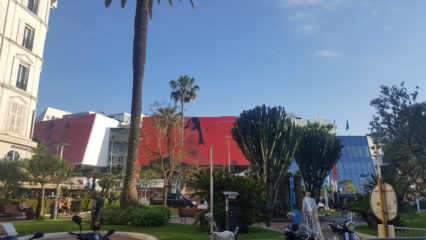 It is perhaps at the market screenings that the sense of hierarchies amongst the attendees becomes most obvious. Some screenings are restricted to buyers only, or only open to those who receive an invite. Sometimes you’ll queue outside a screening only for buyers to be allowed in first, and if the screening room is small enough, you won’t manage to get in, even if you got there first. One remarkable experience I had this year, along with many of my fellow festival organisers and cinema programmers, was being asked to leave a screening we were already seated for because it was suddenly a ‘buyers only’ screening (despite no prior listing of the screening stating as such). The power of the purple-striped badge in action. Given this was for one of the year’s most hotly anticipated genre titles, needless to say there was a great deal of annoyance to be had amongst the dozens of people kicked out into the lobby.
It is perhaps at the market screenings that the sense of hierarchies amongst the attendees becomes most obvious. Some screenings are restricted to buyers only, or only open to those who receive an invite. Sometimes you’ll queue outside a screening only for buyers to be allowed in first, and if the screening room is small enough, you won’t manage to get in, even if you got there first. One remarkable experience I had this year, along with many of my fellow festival organisers and cinema programmers, was being asked to leave a screening we were already seated for because it was suddenly a ‘buyers only’ screening (despite no prior listing of the screening stating as such). The power of the purple-striped badge in action. Given this was for one of the year’s most hotly anticipated genre titles, needless to say there was a great deal of annoyance to be had amongst the dozens of people kicked out into the lobby.
Screenings aren’t the only places where a certain sense of exclusivity can creep in, there are areas of the market reserved for producers, or buyers, or other important roles, allowing for more convenient working spaces. Some special events take place in these areas, offering a tantalising view of the other side – this year I was able to attend a networking event for anyone working in ‘fantastic’ cinema, which took place at the gorgeous Plage des Palmes, a decked area on the beach otherwise restricted to exhibitors and producers. It’s at events like those – when you’re surrounded by a stunning sea view and free champagne – that you get those moments of reflection and wonder when someone’s going to tap you on the shoulder and ask you to leave because what are you doing there anyway?
No such thing happens, of course, because you have every right to be there. No matter what level of the industry you’re involved in, the Marche du Film has something for you (if you can afford the price of attendance, of course). The best thing about attending is being able to spend time with friends from across the industry that I don’t get the chance to see the rest of the year round, as well as making new friends and meeting new peers. Not only is it pleasant in a social sense, it’s excellent in a professional capacity too. It’s also a privilege to have the opportunity to see so many films so early, even in the instances of films which were less than impressive. The glamour and hot weather of Cannes is certainly not my natural environment, but luckily there’s enough time spent sitting in dark, flickering rooms to make attending the Marche du Film a very appealing prospect indeed. Returning to Wales I was met with a blazing hot sun and temperatures higher than on the Riviera. People ask how the ‘holiday’ was. I say it was great, and hope that the sleep catches up with me.


